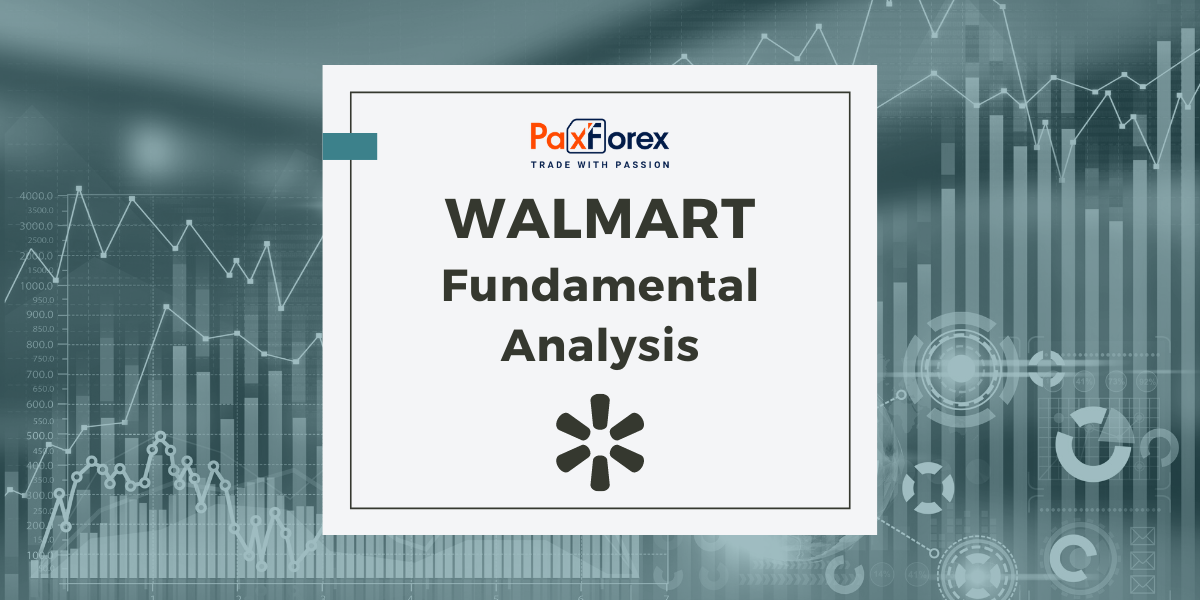
Source: PaxForex Premium Analytics Portal, Fundamental Insight
Walmart is getting rid of its risky dependence on third-party suppliers. At first glance, this may seem like a casual announcement on a day of uneventful news.
But there is actually more to last week's announcement that Walmart is investing in a Nebraska beef processing facility owned by a consortium of livestock farmers. The move is just one of many steps the world's largest retailer is taking to ensure that it has enough of the right products to sell to consumers.
And for investors, this differentiating factor gives Walmart a serious advantage over its competitors.
Walmart is acquiring a minority stake in Sustainable Beef, which is co-owned by several nearby cattle ranches. Tyler Lehr, Walmart's senior vice president of deli, meat, and seafood merchandising, said: "We are committed to providing our customers with high-quality, affordable beef, and our investment in Sustainable Beef LLC will give us even greater access to these products."
Walmart is the world's largest food supplier. Access to one beef processor's products will affect only a small portion of Walmart's small number of stores.
But it's part of a larger initiative that has been in earnest since 2019 when Walmart began investing in its Angus beef supply chain. The partnership with farmers in Georgia laid the groundwork for beef deliveries to 500 stores in the Southeast starting in 2020.
By mid-2021, the end-to-end supply chain allowed Walmart to launch its own private-label organic beef brand, McClaren Farms. The investment in Organic Beef is the next step toward greater self-sufficiency in a product category that is increasingly in demand.
The four companies together control more than 80 percent of the nation's beef processing capacity. Walmart cannot afford to be dependent on their influence.
How important is it to gain access to more beef? Walmart's interest in organic beef (and its financial support for it) mirrors some other self-sufficiency initiatives by the retailer to not only secure supplies, but also to continue to offer low prices. In 2018, the company opened a milk bottling plant in Indiana that supplies about 600 stores. In January, the retailer invested in vertical farming startup Plenty, planning to offer its leafy green vegetables, grown in vertically stacked layers, in many communities in California.
In addition to fresh produce, the Great Value-branded food is sourced directly from processors rather than buying from national brands, which often outsource their production anyway. This approach circumvents the markup that big-name brands typically charge, allowing Walmart to offer a cheaper option on store shelves alongside national brands.
And it matters more now than in the past because of this year's steep price increases and supply chain issues. Market research firm Numerator reports that four of the top five national private-label food brands are owned by Walmart, and nearly 73% of households bought Great Value products at some point in the second quarter of this year.
It's not just food, either. The electronics brand Onn is also one of Walmart's own brands. Depending on the product, these products are often made by the same suppliers as the more popular brands. Again, however, without a better-known name, these products not only bypass an extra step in the supply chain but also cost less.
Pen+Gear stationery, Play Day toys, baby diapers, formula, and Parent's Choice accessories - most of which are manufactured by Wyeth - are also some of Walmart's private-label products. So are the clothing brands Scoop, Free Assembly, and Terra & Sky. The company does not invest in the capital of the suppliers of these goods, but it does take control of its supply and product assortment.
Walmart still relies on third-party manufacturers such as Procter & Gamble, Fruit of the Loom, General Mills, and others that it does not control. It is unlikely that the retailer operates in its own silo, producing every product it sells.
Nevertheless, it is approaching that scenario. Last week's announcement of an investment in a Nebraska beef processor is just another step in that direction. The end result of such a partnership is more control over the supply chain.
And when you have about 10% of all retail sales in the U.S. (like Walmart), that's a big deal. Not only does the size of the company make it too vulnerable to the kind of supply chain reductions we're seeing now, but a partnership like the one with Sustainable Beef can also give you access to cheaper products that your competitors don't have.
Look for more such self-supply partnerships in the future. Walmart's existing reach to both consumers and suppliers, combined with this strategic thinking, should allow the company to get ahead of its competitors when and where it really matters.
As long as the price is above 130.00, follow the recommendations below:
- Time frame: D1
- Recommendation: long position
- Entry point: 137.99
- Take Profit 1: 143.00
- Take Profit 2: 150.00
Alternative scenario:
If the level of 130.00 is broken-down, follow the recommendations below:
- Time frame: D1
- Recommendation: short position
- Entry point: 130.00
- Take Profit 1: 125.00
- Take Profit 2: 120.00













